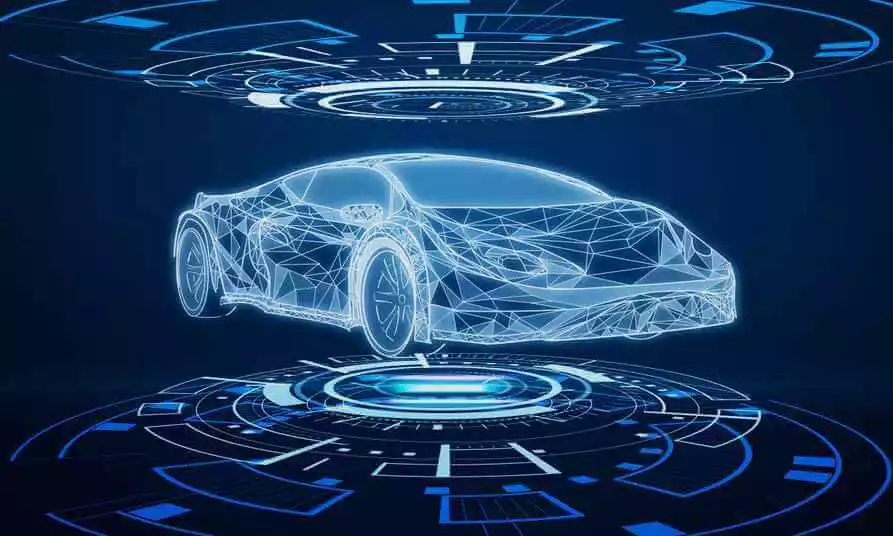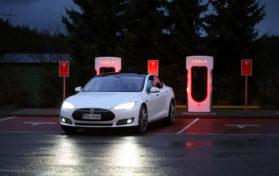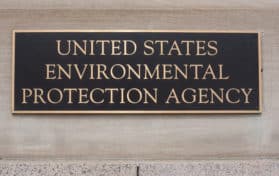
In 1975, President Gerald Ford’s administration introduced the Strategic Fuel Reserve, at the same time introducing fuel economy standards. NASA began work on wind and solar energy, and technology to increase the fuel economy of automobiles was explored. Between 1981 and today, fuel economy of vehicles has improved by a shocking 81 percent.
On Monday, the Biden Administration released new standards for fuel economy in passenger cars and light-duty (half-ton) trucks. By the model year 2026, vehicles in this class are expected to meet standards of 55 miles per gallon or better. The White House claims this is a move to help consumers save money at the pump as well as reduce carbon emissions.
However, compare emissions prior to 1973 and the era of the gasoline shortage. Prior to 1973, emissions were up each year about 4.1 percent during the Sixties. The move to fuel efficiency was one of trial and error and many failed automobile experiences. However, after 1973, emissions decreased to only 0.2 percent per year despite the population growth since that time.
So, why is President Biden pushing for an industry-wide standard of 55 MPG? The current average is 24.9 MPG; raising it to 55 MPG would more than double the current standard.
In contrast, the Trump Administration had set a previous milestone of 43 MPG by that same automotive model year.
This number would be a fleetwide average; the current fleetwide average for 2021 is 40 MPG.
The Environmental Protection Agency says that this new standard will save American drivers between $210 and $420 billion between 2026 and 2050. This number is based on government estimates of the future of gas prices. The EPA went on to say, even when factoring in higher purchase prices for cleaner vehicles, the average American would save $1,000 over the life of the vehicle.
We're taking big, bold action to combat climate change! Today, we're proud to announce our final rule for GHG emission standards for the light-duty sector.? Learn more about what this means for our planet and our communities: https://t.co/c2wslfgtxy pic.twitter.com/wFMiO6mOuL
— U.S. EPA (@EPA) December 20, 2021
The EPA touted the increased standards as curbing pollution from the transportation sector, which is the top source of greenhouse gas emissions. Keep in mind, however, that emissions are only increased by 0.2 percent.
The current EPA Administrator, Michael Regan, said that (the agency) is setting these “rigorous standards” are about not only protecting the environment but also saving consumers money.
The automotive industry said that this standard will be difficult to achieve without some type of federal support. The Alliance for Automotive Innovation says that the industry must have federal funding in order to assist the industry in transitioning to electric vehicles.
This seems to be at a stalemate at this time with Senator Joe Manchin‘s decisive “no” vote regarding the Build Back Better bill. The $2 trillion legislation would have offered approximately $20 billion in tax credits to buyers purchasing an electric vehicle manufactured in the USA in a facility that is unionized. The bill would also offer “other funding” for domestic battery plants and other manufacturing entities which would lend to the production of more fuel efficient vehicles.
Ford Motor Company, one of the “Big Three” automakers in the United States, has already announced plans for its global vehicle sales volume to be at least forty percent electric by the year 2030.
However, the EPA Administrator said that even without funding from the Build Back Better bill and Congress, the auto industry should be able to comply with these new standards. The president of the Sierra Club, another environmental agency, has said that this is the way the industry is moving (toward electric vehicles).
These agencies tell the automotive industry if members want to stay competitive, they will have to move toward manufacturing electric vehicles.
The EPA had also announced stricter standards for fuel emissions in August. The new standards are even more severe than previous edicts. The auto industry was in support of the August standards, but the newer standards are likely to raise consumer costs – a factor not considered by environmental agencies or Congress at this point.
Most American consumers have been reluctant to hop on the electric vehicle bandwagon. Inflation is cutting consumers’ ability to buy more costly vehicles, and drivers are leery of options for charging all-electric vehicles. Motortrend published a piece on electric trucks and their ability to tow and haul compared to gasoline engines. Their experts found that when towing a relatively light load (one passenger car, which is much less than what typically drivers tow with a truck), drivers had to stop approximately every 100 – 120 miles for a 40 minute recharge. The time wasted while an electric vehicle is charging is also a problem for consumers.
Is America ready for the electric vehicle revolution? The Biden Administration says increased MPG standards are meant for our automakers to become more competitive with China. However, consumers are leery of electric vehicles for many reasons; plus, inflation and other economic issues have Americans loathe to purchase a new vehicle.





